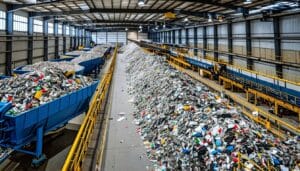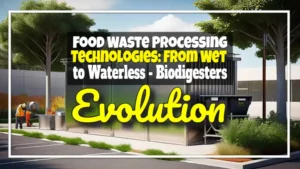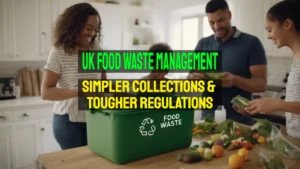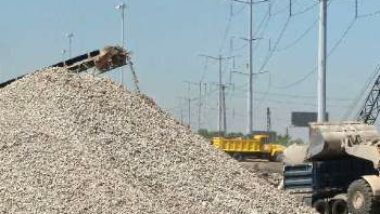US Report Titled – Poison PCs and Toxic TVs (Also Highly Relevant to Mobile Phone Recycling)
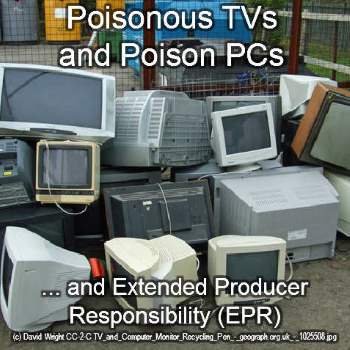 Poison PCs and Toxic TVs, was a broken citation link in Wikipedia (Ref: 2 at the following url, http://en.wikipedia.org/wiki/Mobile_phone_recycling, but we found that it is available on the “WayBack Machine”, by following this link.:
Poison PCs and Toxic TVs, was a broken citation link in Wikipedia (Ref: 2 at the following url, http://en.wikipedia.org/wiki/Mobile_phone_recycling, but we found that it is available on the “WayBack Machine”, by following this link.:“CONTENTSᅠ
- Executive Summary
- Overview
- Poisons in E-waste and their effects on us
- Disposing of computers is hazardous
- Exporting harm: The high tech trashing of developing nations
- How does the US respond to the challenge?
- Costs of E-waste
- What we propose
- Computer TackBack campaign platform
- Endnotesᅠ– “Gadgets to Garbage”ᅠChristian Science MonitorᅠJanuary 2, 2004″
The following quotation is the entire Executive Summary from the report:
“Electronic waste (E-waste) encompasses a broad and growing range of electronic devices ranging from personal computers and televisions, to handheld PDAs, VCRs, and cellular phones. Where once consumers purchased a stereo console or television set with the expectation that it would last for a decade or more, the increasingly rapid evolution of technology has effectively rendered everything disposable. Consumers no longer take a malfunctioning television, VCR or telephone to a repair shop. Replacement is often easier and cheaper than repair. And while these ever-improving gadgets – faster, smaller, and cheaper – provide many benefits, they also carry a legacy of waste. Electronic waste already constitutes from 2% to 5% of the US municipal solid waste stream and is growing rapidly. European studies estimate that the volume of electronic waste is rising by 3% to 5% per year – almost three times faster than the municipal waste stream. 1 According to the US Environmental Protection Agency (EPA), in 1997 more than 3.2 million tons of E-waste ended up in US landfills.
In a report for the EPA, analysts warned that the amount of E-waste in US landfills would grow fourfold in the next few years. 2 Over the last several years, no product so epitomizes the problems posed by obsolete electronics as the personal computer. Televisions with cathode ray tubes present the same problems. Due to their growing waste volume, toxicity and management cost, both computers and televisions are the focus of this report. How US policy makers – at the national, state and local level – choose to address the problems posed by obsolete computers and televisions is likely to set the tone for the broader spectrum of E-waste. Our laws and regulations are beginning to slowly – and imperfectly – address these concerns. Today's computer industry innovates very rapidly, bringing new technologies and .upgrades' to market every couple of years. According to industry sales figures, US purchasers bought more than 45 million new computer systems in 2002.3 Currently over 50% of US households own a computer. 3 Should every consumer attempt to throw out their obsolete computer at once, the nation would face a “tsunami” of e-scrap, presenting a major budgetary and environmental crisis that, depending on policy decisions now, could unfairly burden state and local governments with the cost of handling this crisis. By 2006, some 163,420 computers and televisions will become obsolete in the US every day – weighing in at almost 3,513 tons. 5 These units have been used, reused, and stored – and will then be either recycled or tossed out with the trash and subsequently landfilled by trash collectors.
Consumers have, on average, 2 to 3 obsolete computers in their garages, closets or storage spaces. US government researchers estimated that three-quarters of all computers ever sold in the United States remain stockpiled, awaiting disposal. 6 The crisis continues to grow. Other studies estimate that the number of obsolete computers in the United States will soon be as high as 315 to 680 million units. 7, 8 Recycling rates for computers are low, and opportunities are challenging for most consumers – limited to occasional drop-off programs, or complex mail-back programs offered by a few manufacturers.
Options that do exist typically come with a price tag of $10 to $60 per unit, require waiting for infrequent one-day voluntary programs at remote locations. 9 One example: IBM sold more than 3 million computers in the United States in 2000, and was the first manufacturer to establish a payas-you-go system for recycling obsolete computers. Results were under-whelming. According to the company, less than 1,000 computers (0.03% of annual sales) were recycled during this period.
Toxic TVs and Poison PCs 3 The National Safety Council reported in 1999 that only 11% of discarded computers were recycled, compared with 28% of overall municipal solid waste. 10 Other estimates of computer recycling range from 5% to 15%, compared to a 42% rate for overall solid waste and a 70% rate for major appliances like refrigerators, washing machines, and dryers. 11 For large commercial customers, computer system distributors may negotiate for the collection and management of obsolete computer systems. While there remains limited information on where and if these computers and televisions are recycled, some studies tracking E-waste shipped overseas find that lax practices pose serious environmental and human health threats.”
Our Summary of the Report:
Take it back!
Financial and/or physical obligation
- Collection, disassembly, reuse and recycling of disposed of computer system equipment to the greatest
- degree practicable; and
- Requirements that recycling is done in an environmentally sound manner.
- Facilities development
- EPR will cultivate development of reliable, ecologically sound and sustainable facilitiesᅠfor collection, reuse, re-manufacturing and recycling of electronic equipment.
Stop hazardous waste exports
Recycling objectives
Make It Clean!
Phase out harmful products
Proper handling of harmful products
Adopt closed-loop recycling – otherwise known as a “circular economy“
Revolutionizing Waste Recovery: Latest Separation And Sorting Innovations
Waste recovery is changing fast, thanks to new separation and sorting technology. This tech helps us sort trash better, so we can recycle more things. For example, Stadler has built a big plant in Spain for VAERSA that makes recycling easier and smarter. Keson is finding new ways to deal with old tyres, helping both […]
The Circular Economy In Fashion: Making Clothes Sustainable
Fast fashion fills our wardrobes, but most clothes end up in landfills within a year. Introducing the concept of the circular economy in fashion. It's the best hope for making our clothes sustainable. The global clothing industry creates over 92 million tonnes of waste each year, making it one of Earth's biggest polluters. A circular […]
The Evolution of Food Waste Processing Technologies: From Wet to Waterless Biodigesters
Read on for the latest news on the development of wet and waterless biodigesters as a means of processing Food Waste. As food waste management becomes an increasingly pressing issue for environmental sustainability, the evolution of waste processing technologies has been a game-changer in how we handle organic material. For decades, the food waste processing […]
The Future of UK Food Waste Management – Simpler Collections and Tougher Regulation
The future of UK food waste management will be a big push toward higher recycling rates through simpler collection and far greater consistency across the nations, helping citizens understand how to be green and recycle more organic waste. As the UK continues to advance its environmental goals, recently announced government policies aimed at simplifying waste […]



